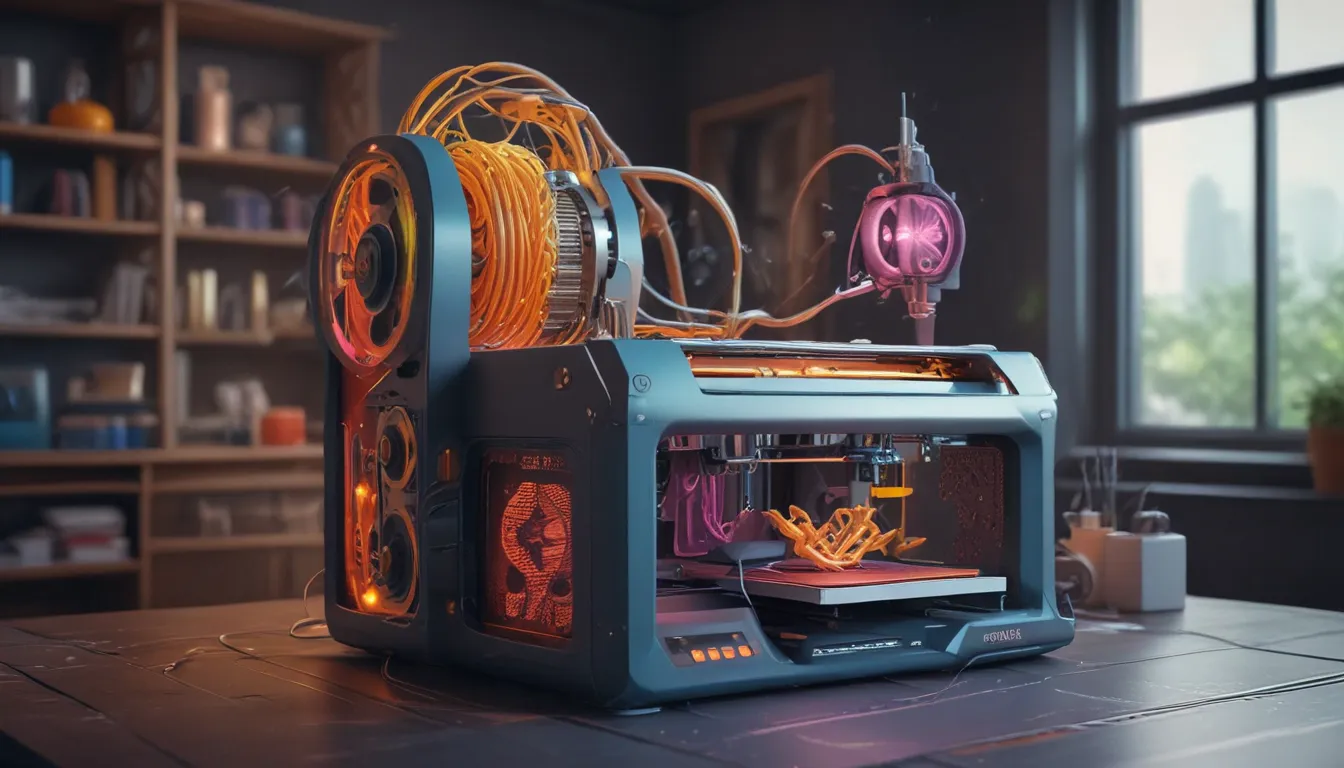A Note About Images: The images used in our articles are for illustration purposes only and may not exactly match the content. They are meant to engage readers, but the text should be relied upon for accurate information.
In the realm of technological advancements, 3D printing stands out as a promising innovation with the potential to revolutionize various industries. This cutting-edge technology promises the ability for virtually anyone to create objects instantly, regardless of quantity. As we look towards the future, it’s clear that 3D printing has the power to reshape the way we perceive food, clothing, medicine, and more. Let’s delve deeper into the world of 3D printing through these enlightening facts.
Unveiling the Unprecedented Potential of 3D Printing
Quick Facts
- Manufacturers anticipate the shipment of 6.7 million 3D printers in the year 2020.
- Boeing reaped a staggering $3 million in savings by incorporating 3D printing into their production of titanium parts.
- General Electric foresees a monumental $3-5 billion in savings over the next decade by transitioning to 3D printing for manufacturing purposes.
- By 2022, the market value of 3D printing in the medical industry is projected to reach an impressive $9.4 billion.
- The metallic 3D printing market is predicted to soar to $6.6 billion by 2026.
Essential Facts
- The concept of 3D printing was initially introduced by David Jones in 1974.
- Hideo Kodama developed two methods for creating 3D plastic models in 1981.
- Bill Masters obtained the first patent for a 3D printer in 1984.
- Chuck Hull pioneered stereolithography in the same year, leading to significant advancements.
- Stratasys made history by introducing the first FDM 3D printers in 1992.
- The Fraunhofer Society revolutionized the industry with the development of selective laser melting in 1995.
- The expiration of FDM patents in 2009 marked a pivotal moment for the industry.
- The 2010s witnessed manufacturers venturing into the production of metal end-use parts using 3D printing.
- In 2012, Filabot introduced a new system capable of producing a wide range of plastic products.
- Benjamin S. Cook and Manos M. Tentzeris innovated a method in 2014 for printing complex electronics using 3D technology.
Interesting Facts
- 3D printing is synonymous with additive manufacturing, heralding a new era of production.
- Designs for 3D printing are crafted using Computer Assisted Drawing (CAD) software.
- While 3D printing originated with plastic materials, it has since expanded to include metals and ceramics.
- Some experts believe that 3D printing could catalyze the next Industrial Revolution.
- Notably, the US Navy has delved into the potential use of 3D printing for manufacturing replacement parts.
Exploring Different 3D Printing Techniques
Fused Deposition Modeling (FDM): A Game-Changer in Manufacturing
Fused Deposition Modeling, also known as Fused Filament Fabrication (FFF), dominates the 3D printing landscape, constituting 48% of all existing printers. Operating akin to a glue gun, FDM builds objects by laying thermoplastic layers, typically from the bottom up.
Stereolithography: Illuminating the Path to Precision
Stereolithography leverages light to sculpt models within a vat of raw materials. Through the use of light-sensitive materials, the model is hardened layer by layer, eventually emerging as a complete structure once lifted from the vat.
Selective Laser Sintering (SLS): Pioneering a Modern Approach
Selective Laser Sintering employs lasers to fuse powdered materials, such as nylon, into a final product. The laser heats the powder to the verge of melting, allowing for the material to fuse and form the desired shape, culminating in the completion of the printing process.
Selective Laser Melting (SLM): Redefining Printing with Metal
Photo by Anonimski from Wikipedia
Selective Laser Melting, though often categorized as a subset of SLS due to shared laser usage, is distinct in its approach. In SLM, lasers melt metal powders in 20mm layers, effectively welding them together to form the desired pattern. This method primarily employs metal powders, highlighting its prevalence in metal-based 3D printing.
Embracing the Versatility of Advanced 3D Printers
While most 3D printers are limited to one raw material, advancements are underway to enable printers to utilize various materials simultaneously. This groundbreaking development paves the way for multifaceted applications, especially in the medical field where the potential to print complex medications promises enhanced cost-effectiveness and scalability.
The Evolution of 3D Printing Applications
From Tools to Traditions: A Journey Through 3D Printing Applications
Initially, 3D printing found its niche in tool and prototype production, providing a convenient and efficient means for creating replacements in industrial settings. Over time, the technology evolved to cater to intricate devices, marking a shift towards broader applications.
Gourmet Innovations: The Future of 3D Printed Food
Photo by Bernat Cuni from Wikipedia
The idea of 3D printing food may seem like a far-fetched notion, but it holds immense promise in redefining culinary experiences. While current capabilities are limited to softer ingredients like cheese and chocolate, the potential lies in customizing diets for individuals with specific dietary requirements, including astronauts embarking on space missions.
Fashion Forward: Global Brands Embrace 3D Printed Apparel
The fashion industry has embraced 3D printing, with major brands leveraging the technology to produce innovative designs. Not only has 3D printing revolutionized prototyping processes, but renowned companies like Nike and New Balance have integrated 3D printers to create custom sports apparel, exemplifying the transformative power of this technology.
Addressing Concerns: Ethical and Legal Implications of 3D Printing
Safeguarding Intellectual Property in the Age of 3D Printing
While the potential of 3D printing is vast, it poses challenges in safeguarding intellectual property rights. The ease of replicating patented designs raises concerns regarding patent and copyright infringements. However, legal frameworks allow for fair use under specific conditions, mitigating risks associated with intellectual property violations.
Navigating Regulatory Challenges: The Case of 3D Printed Weapons
Photo by Shanrilivan from Wikipedia
The advent of 3D printing introduces novel regulatory challenges, particularly concerning the production of weapons. The convenience and accessibility of 3D printers raise concerns about compliance with existing gun regulations. To address these issues, stringent regulations govern the creation and distribution of 3D printed weapons, underscoring the importance of upholding regulatory frameworks.
In conclusion, 3D printing stands at the forefront of innovation, offering boundless opportunities across diverse industries. As we navigate the evolving landscape of 3D printing, it’s crucial to explore its transformative potential responsibly, addressing ethical, legal, and regulatory considerations. Embracing the advancements in 3D printing paves the way for a future brimming with possibilities, where creativity and innovation converge to shape a new era of technological marvels.






